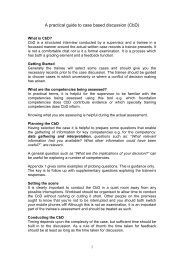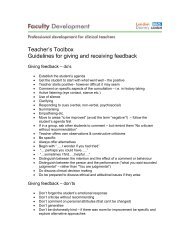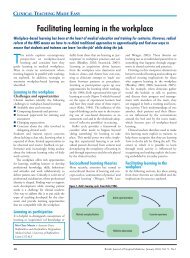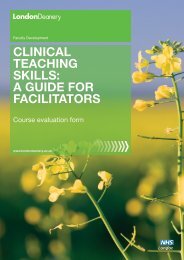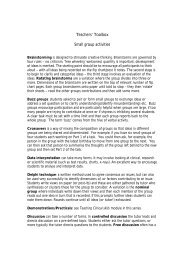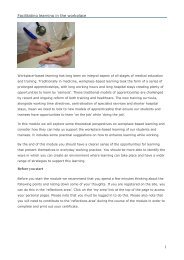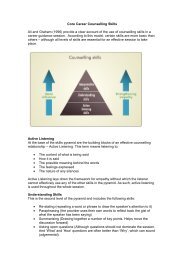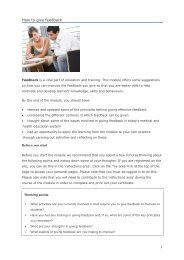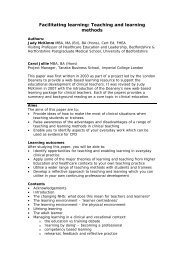Curriculum development module - Faculty Development - London ...
Curriculum development module - Faculty Development - London ...
Curriculum development module - Faculty Development - London ...
Create successful ePaper yourself
Turn your PDF publications into a flip-book with our unique Google optimized e-Paper software.
Annex 1<br />
<strong>Curriculum</strong> <strong>development</strong> – implementing equal opportunities<br />
One of the issues to be addressed in curriculum design and delivery is the issue of<br />
equal opportunities. For example, in aiming to achieve gender equality within the<br />
education system, there are two main issues to be addressed. The first is the<br />
recognition that despite a general belief among teachers that they do not<br />
discriminate on the grounds of gender, male and female students often leave<br />
education with differential qualifications, career aspirations, and self perceptions<br />
which reflect traditional assumptions and stereotypes.<br />
Institutions should aim to foster a climate in which a positive attitude to gender<br />
equality is actively promoted. This includes tackling the problems of differential<br />
expectations and the long-term effects of prejudice and stereotyping. Research<br />
into the position of women in science and engineering has indicated that for many<br />
women the educational climate is ‘chilly’ and comparably few women progress<br />
into senior positions. In medicine, the position is different. More women than men<br />
enter medical school and qualify in similar numbers. But, as in many professions,<br />
women are clustered in lower career positions at the bottom of the pyramid,<br />
whereas the majority of senior positions in clinical and in academic medicine in<br />
particular are held by men.<br />
It is important that as teachers, we do our best to address the needs of both<br />
sexes whilst acknowledging that there are ways in which we develop and deliver<br />
the curriculum which may help perpetuate women’s position.<br />
In delivering teaching, some appropriate methods are:<br />
• Adopting particular teaching/learning styles eg. small group work which<br />
may encourage less confident students to take a lead<br />
• Incorporating confidence building programmes into the curriculum<br />
• Introduction through the curriculum of role models who work in nonstereotypical<br />
areas<br />
• The careful selection of teaching and display materials to avoid bias. Where<br />
resource materials cannot be replaced, attention can be drawn to the issue<br />
of stereotyping<br />
• Consideration by staff of any stereotypical reasons for regarding work as<br />
acceptable or otherwise eg. a female has worked hard and the work is neat<br />
and well presented, a male student is clever but untidy<br />
Above all, teachers will need to consider carefully and honestly whether they<br />
prefer teaching students of one or other sex, and whether as a result there are<br />
any other differences in their attitudes or approach on grounds of gender. It is<br />
helpful to be able to discuss these issues with a colleague and to enlist that<br />
colleague’s help in observing practice in teaching situations which may identify<br />
unconscious variations in the treatment of students/trainees. It is important<br />
therefore that staff tackle these issues as a group and lend support to one<br />
another, recognising that all can be involved in unconscious bias which may<br />
reinforce traditional stereotypes prejudicial to the <strong>development</strong> of the individual<br />
student.



